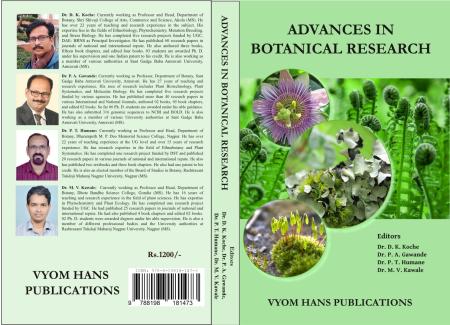QUALITATIVE PHYTOCHEMICAL ANALYSIS OF SOME WILD EDIBLE VEGETABLES FROM BULDHANA DISTRICT (MS) INDIA
Synopsis
Wild edible vegetables have played an important role since ancient times in providing nourishment to people. In many regions, tribal communities depend on wild edible vegetables for both sustenance and income. These wild edible vegetables possess various nutraceutical and medicinal properties like antiallergic, antibacterial. In Ayurveda, many of these plants are used to cure diseases. The present research focuses on the phytochemical analysis of some species of non cultivated, wild, and traditional vegetables available in the area surrounding Takarkhed Mu. Village, Tq. Chikhli, Dist. Buldhana (Maharashtra) during the rainy season. These wild plants are used both as medicine and vegetables. They are utilized to treat various diseases such as diabetes, dysentery, dyspepsia, gastritis, constipation, urinary disorders, and mouth sores, to improve hair growth. They are easily available in natural habitats and are a cheap and excellent source of nutrients such as proteins, carbohydrates, iron, essential minerals, and other secondary metabolites. Phytochemical analysis of wild vegetable extract reveals the presence of phytochemicals such as phenols, tannins, saponins, alkaloids, and flavonoids. The phytochemical analysis of these plants is crucial commercially and holds significant interest for pharmaceutical companies in the production of new drugs to treat various diseases.These are easily available in natural habitats, a cheap and excellent source of nutrients like proteins, carbohydrates, iron, essential minerals, and other secondary metabolites. Phytochemical analysis of wild vegetable extracts show the presence of phytochemicals such as phenols, tannins, saponins, alkaloids, and flavonoids. The phytochemical analysis of these plants is very important commercially and has a great interest in pharmaceutical companies for the production of new drugs for curing various diseases. This study will investigate the qualitative characteristics of several edible wild herbaceous species, including those most commonly consumed: Capparis zeylanica L. (Waghati) - Capparidaceae, Celosia argentea L. (Kurdu) - Amaranthaceae, Citrullus colocynthis L. (Sherni) - Cucurbitaceae, Momordica dioica Roxb ex Willd (Kantule) - Cucurbitaceae, Telosma pallida L. (Zatuli) - Asclepiadaceae
Keyword: Phytochemical, Phenols, Tannins, Saponins, Alkaloids, Flavonoids





